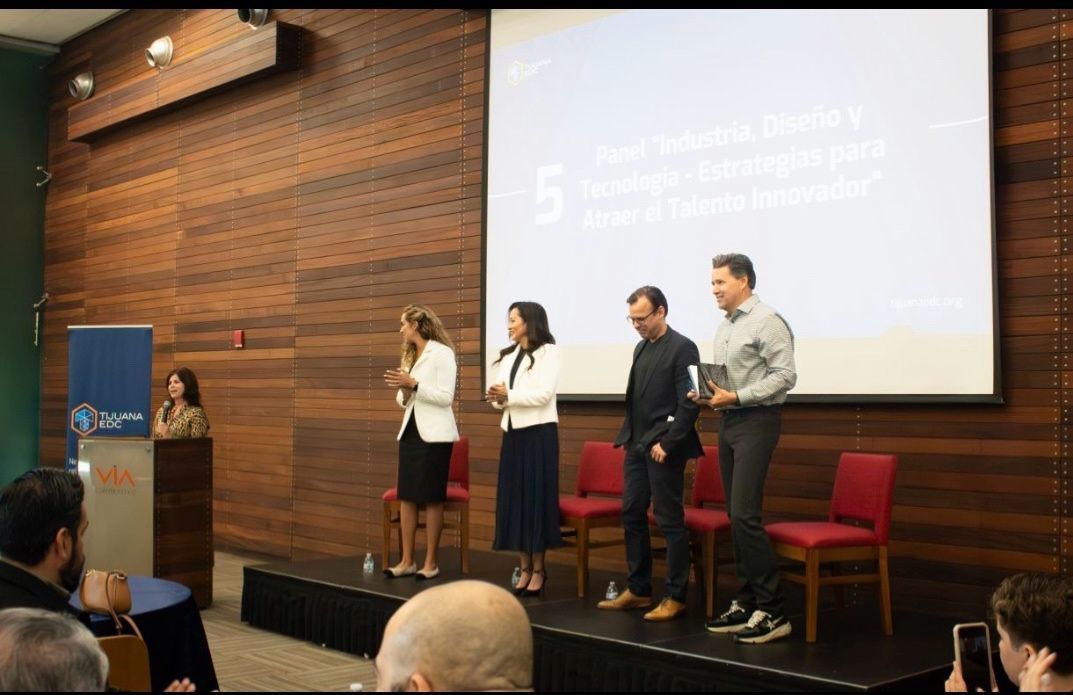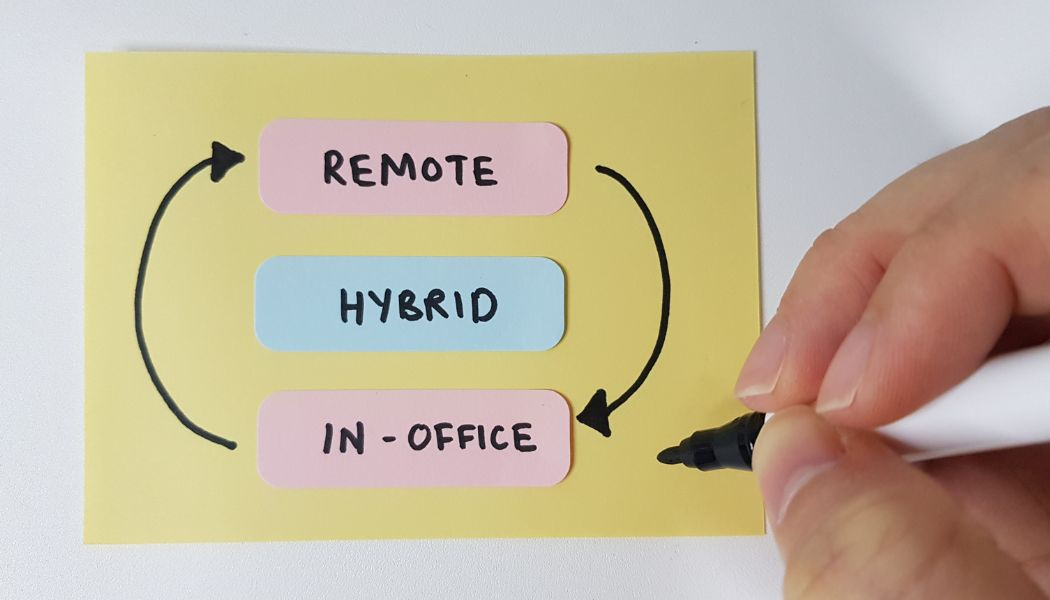With Hundreds of Benefits Now in the Mix, How Can Employers Decide What to Offer?
Lizzette Weber • August 12, 2024
With Hundreds of Benefits Now in the Mix, How Can Employers Decide What to Offer?
In our latest edition, we explore how the employee benefits landscape is rapidly evolving. According to the SHRM Employee Benefits Survey, the number of benefits available to employees has surged by 23% in just two years, growing from 175 to 216 options!
This expanding array of benefits offers exciting opportunities but also poses new challenges for employers. How do you determine which perks to offer? How can you stay competitive while truly supporting your team?
Don't miss our insights in this edition!

By Lizzette Weber
•
November 8, 2024
What an incredible evening at the MAAC Soirée! It was a pleasure reconnecting with the MAAC team and celebrating the milestones we've achieved together this year. We're proud to support such a dedicated organization and are excited about the continued impact we can make together. Here’s to even greater success and partnership in the future!

By Lizzette Weber
•
September 18, 2024
Talent Connect was proud to visit Fire Station 4 as part of our tradition to honor the 441 first responders who lost their lives on 9/11. In collaboration with Seven Mile Casino , the Chula Vista Chamber of Commerce , we were humbled to deliver meals to our local heroes, showing our gratitude for their dedication and service. This annual event allows us to give back to those who protect our community, and we look forward to continuing this tradition.

By Lizzette Weber
•
September 16, 2024
As we approach 2024, workplace dynamics are shifting dramatically. The relationship between employers and employees is evolving, and organizations must rethink their approaches to management, culture, and hybrid work. To succeed in this new environment, leaders need to stay informed and proactive. 1. Global Worker Stress Remains at Record Highs While employee engagement has been making a comeback, it hasn’t yet offset the record-high levels of stress in the workplace. Gallup’s recent report reveals that over 52% of employees in the U.S. and Canada feel stressed daily—a troubling trend that impacts not only productivity but also employee retention and wellbeing. This ongoing stress crisis is tied to workplace demands, post-pandemic adjustments, and economic pressures. Leaders must take a holistic approach to addressing employee wellbeing by introducing stress management programs, flexible work policies, and support systems that prioritize mental health. In 2024, the challenge for leaders will be to determine whether the positive rise in engagement can outpace the negative impacts of stress, ensuring their teams remain productive, healthy, and motivated. 2. Engagement Is Slowly Recovering, but Connection to Purpose Is Dwindling Employee engagement has started to rebound from the post-pandemic slump, but there’s a growing concern: employees feel less connected to their company’s mission and purpose. This lack of connection can result in employees doing just enough to meet expectations, rather than going above and beyond. When employees feel aligned with an organization’s values and purpose, they are more likely to push toward excellence, be more productive, and stay with the company long-term. Leaders must focus on rebuilding this connection by clearly communicating their organization’s goals, celebrating successes, and ensuring employees understand how their work contributes to the bigger picture. 3. Trust in Leadership Is Slowly Rebounding Trust in leadership took a hit during the pandemic, and while it’s slowly recovering, the current state of trust is still alarmingly low. Only 23% of U.S. employees strongly agree that they trust their organization’s leadership, creating a disconnect between employees and decision-makers. For leaders, restoring trust means stepping up communication efforts, being transparent, and fostering a supportive environment where employees feel heard. When leaders actively engage with their workforce and inspire confidence in the future, the impact is profound: 95% of employees in high-trust environments say they fully support their leaders. Building trust in 2024 will be a cornerstone of effective leadership, helping organizations navigate change, build resilient teams, and foster loyalty across the workforce. 4. Managers Are Under Pressure and Need Support Managers have faced unprecedented challenges over the last few years, juggling increased workloads, tighter budgets, and the emotional strain of leading teams through uncertainty. Gallup’s research highlights that managers are more likely to experience burnout, disengagement, and work-life imbalance than non-managers. This “manager squeeze” is a significant concern for organizations, as managers are critical to driving team collaboration and engagement. Leaders must take action by investing in manager training and support, giving them the tools they need to succeed in today’s fast-paced, ever-evolving work environment. Without adequate support, these issues will trickle down to the rest of the team, negatively affecting employee performance and overall engagement. As we look to 2024, leaders must prioritize developing resilient, well-equipped managers who can handle the complexities of today’s workforce. 5. Hybrid Work Is Here to Stay, But It Needs a Strategy Hybrid work has become the norm for remote-capable employees, and most organizations, especially large enterprises, have accepted that this arrangement is here to stay. In fact, a recent survey of Fortune 500 CHROs revealed that 80% have no plans to reduce remote work options in the next year. But simply offering hybrid work isn’t enough—organizations need a clear, long-term hybrid work strategy that optimizes productivity and collaboration. Leaders should focus on creating a compelling workplace value proposition that appeals to both in-office and remote workers, ensuring that the benefits of hybrid work (flexibility, work-life balance, increased engagement) are fully realized. Additionally, training managers to lead hybrid teams effectively, fostering strong communication, and revising performance management systems will be essential to maintaining a positive hybrid work environment in 2024. 6. Hybrid Culture Offers Big Benefits—If Done Right Hybrid work isn’t just a trend—it’s a powerful way to boost employee engagement, reduce turnover, and improve overall well being. However, it comes with its own set of challenges. As more teams work remotely and on varying schedules, leaders must be intentional in maintaining a strong hybrid work culture. Organizations that want to thrive in this model must prioritize building relationships, enhancing team collaboration, and reinforcing company values, regardless of where employees are working. Leaders and managers alike need to focus on maintaining clear communication, promoting trust, and creating opportunities for employees to stay connected and aligned with company goals. When done right, hybrid work can significantly improve retention and talent acquisition while reducing employee burnout and expanding access to a wider, more diverse talent pool. At Talent Connect , we understand the complexities of navigating these evolving workplace trends. Whether you’re looking to improve employee engagement, develop stronger leaders, or implement a sustainable hybrid work strategy, our expertise in executive search and HR services will help your organization succeed in 2024. Let’s connect and explore how we can help you drive organizational growth, build stronger teams, and navigate the workplace trends of tomorrow.

By Lizzette Weber
•
September 7, 2024
On August 22nd, our founder and CEO Lizzette Weber, participated in a dynamic panel discussion hosted by DEITAC titled “Industry, Design, and Technology: Strategies to Attract Innovative Talent.” The panel featured thought leaders including Adriana Eguia Alaniz , coordinator of DEITAC’s Industrial Developers Committee, Miguel Abarca and Project Director at Gensler, and Jorge Gracia, Founder of Gracia Studio. Together, they explored the latest trends in industrial development and how these align with the evolving needs of the workforce. The conversation highlighted how innovative industrial park designs and Tijuana’s strategic positioning are key to attracting and retaining top talent. It was an enriching exchange that underscored the importance of a sustainable, human-centered approach to industrial growth. We’re excited to continue fostering innovation and talent attraction in the region!

By Lizzette Weber
•
September 6, 2024
Transitioning from a peer to a management role can be one of the most challenging yet rewarding steps in a professional career. It requires a shift in mindset, new skills, and the ability to navigate the complexities of leadership. Here’s what first-time managers need to know when stepping into their new role: 1. Shift Your Focus from Self to Team As an individual contributor, your success was about your own performance. In a management role, the focus shifts to your team's performance. It’s essential to “flip the script” and shine the spotlight on others. Your success is now tied to how well your team performs. 2. Set Clear Expectations Communicating openly with your team about your new role is crucial. Address any potential awkwardness by discussing the transition with former peers. Setting clear boundaries and expectations from the start will help manage relationships and create a productive environment. 3. Embrace Delegation New managers often struggle with the temptation to continue doing the work themselves. However, true leadership involves empowering your team by delegating tasks that align with their strengths. This not only helps develop your team but also builds trust. 4. Seek Training and Coaching Management is not instinctive; it requires learning and growth. Take advantage of formal leadership training, coaching, and mentorship opportunities to develop the interpersonal and strategic skills needed to lead effectively. A self-assessment can also help identify your leadership strengths and areas for improvement. 5. Build a New Support Network Don’t go it alone. Connecting with other managers at your level is essential to gain insights and advice. Cultivate a peer group of fellow leaders to share best practices, challenges, and strategies for success. 6. Create an Infrastructure for Success For organizations, providing structured support for new managers is key. A well-prepared leader is one who’s been given the tools to succeed. Organizations should ensure that leadership development, training, and mentoring opportunities are in place for smooth transitions. Stepping into management for the first time is both challenging and fulfilling, but with the right preparation and mindset, new leaders can not only navigate this transition but thrive in their new roles. At Talent Connect, we’re committed to supporting professionals through every stage of their careers—helping them become the effective leaders of tomorrow. Stay connected with Talent Connect for more insights on leadership, talent development, and HR best practices !

By Lizzette Weber
•
September 2, 2024
We’re excited to share that our Founder and CEO, Lizzette Weber has been honored as Business Leader of the Year by the NLBWA San Diego (National Latina Business Women Association San Diego) The celebration aboard the Hornblower yacht in San Diego Bay was a memorable event, with a delicious brunch, bottomless mimosas, and a wonderful atmosphere. Lizzette was recognized among other incredible women nominated across various categories, all embodying the mission of NLBWA to empower and elevate Latina leaders. This award reflects Lizzette’s dedication and the collective efforts of our entire Talent Connect team. We’re proud to be part of her journey and look forward to the future✨

By Lizzette Weber
•
September 2, 2024
“Somos Una" Third Annual Conference MANA de North County San Diego 💫 Talent Connect is thrilled to have sponsored the impactful Somos Una event, which celebrated the power and unity of our community. We are honored to support the growth and empowerment of our hermanas. Our Founder & CEO, Lizzette Weber , participated in the learning circle session on multicultural strategies alongside other accomplished and successful business owners, sharing valuable insights on diversity and inclusive recruiting and HR business practices. Held at Palomar College, the event was a hub of powerful insights from community leaders. A special thank you to Adriana "Adri" Brunner for orchestrating such a remarkable, inspiring and fun event.

By Lizzette Weber
•
July 12, 2024
Did you know? According to a 2023 Gallup poll, 45% of full-time employees in the U.S. are now working remotely at least part of the time. Additionally, a 2023 McKinsey report found that 58% of employees prefer a hybrid work model. Discover how these trends are reshaping the workplace landscape and what it means for your organization in our latest newsletter. Whether it's remote, hybrid, or in-person, flexibility is key to attracting and retaining top talent in the evolving world of work. Read our Newsletter on LinkedIn here...

By Lizzette Weber
•
July 12, 2024
An unforgettable evening celebrating the strength and spirit of the Latino community! Talent Connect Executive Search & HR Solutions, a proud Latino-owned company championing diversity and inclusion, was thrilled to sponsor the "Latinos Unidos" event at the Jamul Casino Rooftop. Congratulations to the San Diego County Hispanic Chamber of Commerce , National Latina Women Business Association [NLBWA-SD], Latin Business Association , La Revista Binacional , SAN DIEGO LA RAZA LAWYERS ASSOCIATION , and NAHREP San Diego- NAHREP - National Association of Hispanic Real Estate Professionals® for organizing this successful gathering. Witnessing leaders and businesses unite to make a meaningful impact in our community was truly inspiring. With over 250 guests from various community partnerships, it was an incredible opportunity to connect and network. A special thanks to our amazing team members who attended and those who supported us in spirit. Chrysanne Weber Anaid Alvarez Nicole Yee Jared Priscila Cruz Lorís Maymes Kassouf Together, we're making a positive impact and fostering a strong, united community! View our LinkedIn post here...
© 2025
All Rights Reserved | TALENT CONNECT EXECUTIVE SEARCH & HR SOLUTIONS, LLC | Created by ZING.work








